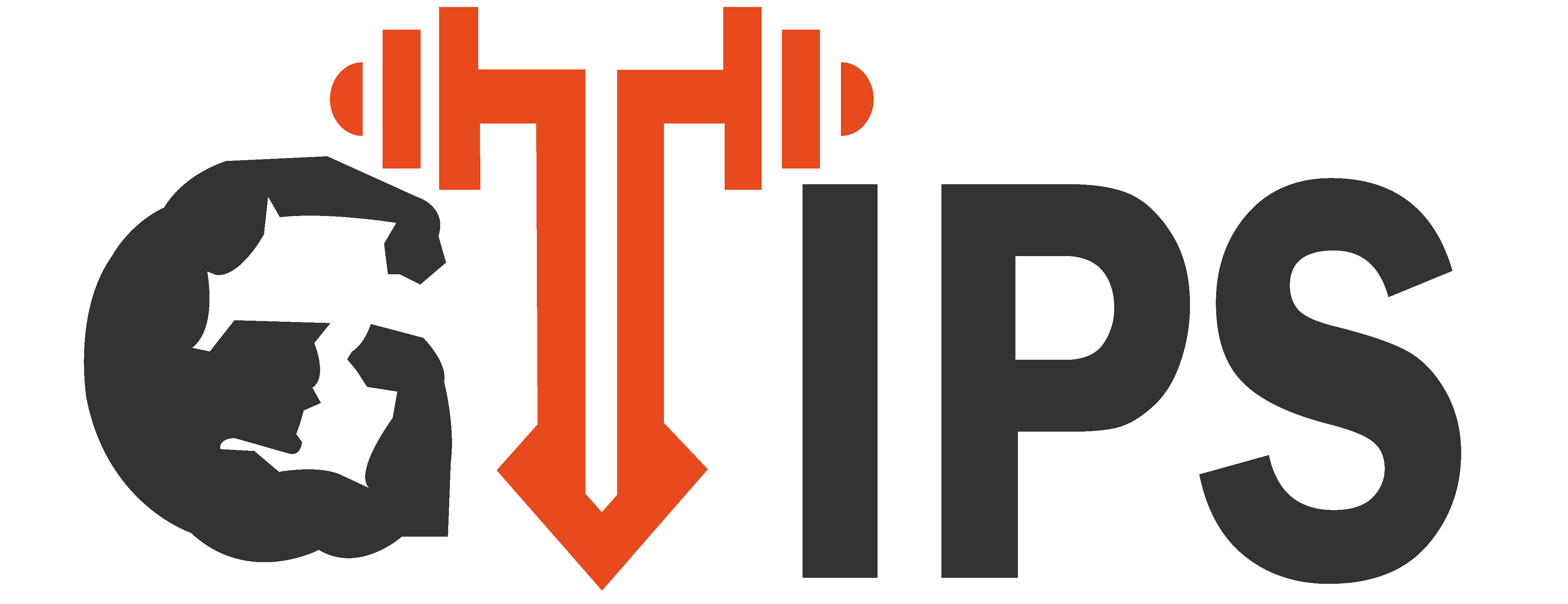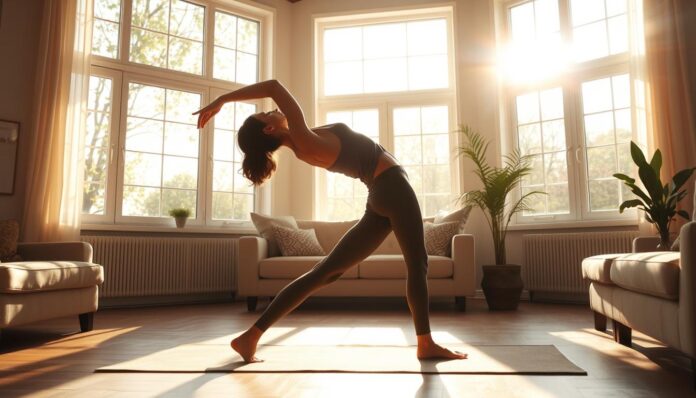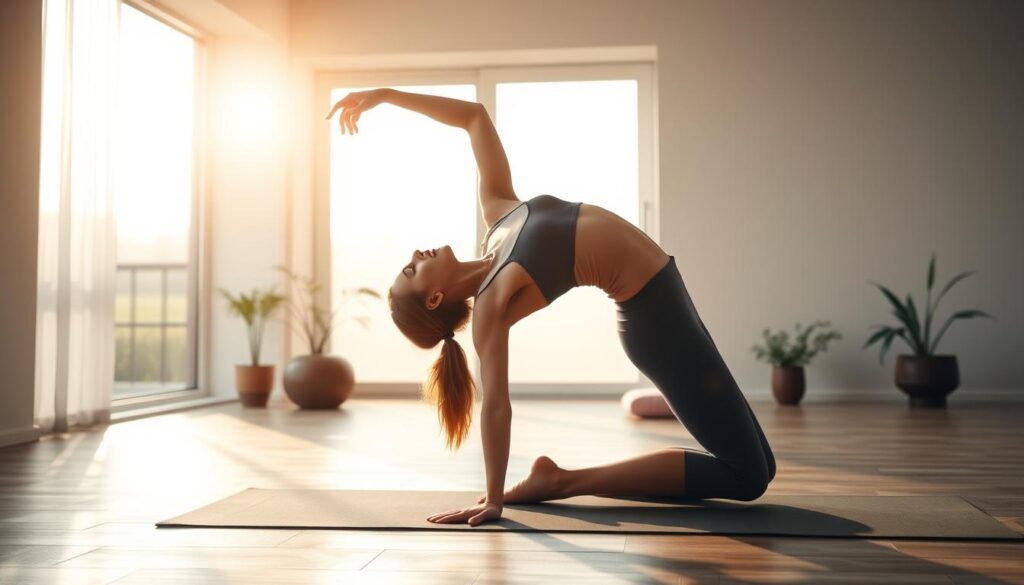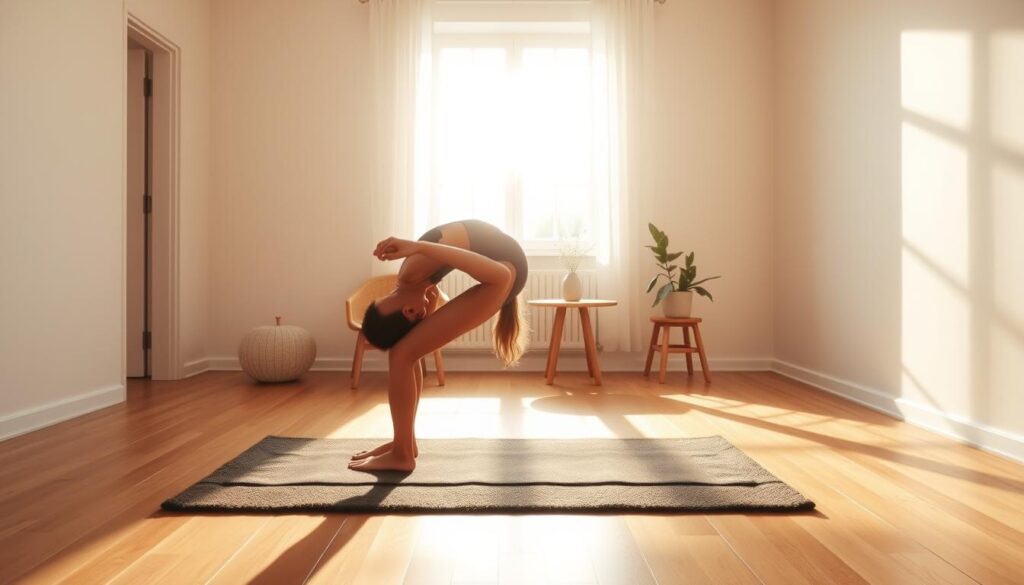Do you wake up feeling stiff and slow? Do you find it hard to get going in the morning, feeling like you’re moving through mud?
Starting your day with a flexible body and mind is key. Adding simple stretches to your morning can energize you. It also boosts your flexibility and cuts down on muscle tightness.
Just a few minutes of gentle stretches in the morning can prepare you for a day full of energy and life.
Key Takeaways
- Boost your energy levels with simple stretches
- Improve your overall flexibility and range of motion
- Reduce muscle tension and alleviate stress
- Enhance your mental clarity and focus
- Set yourself up for a day filled with energy and vitality
The Benefits of Morning Flexibility Training
Morning flexibility exercises are great for your body and mind. Adding a morning routine can make you feel better in many ways.
Physical Benefits for Your Body
Morning flexibility training has many physical perks. It improves blood flow and reduces stiffness. It also boosts your range of motion and helps prevent injuries.
Improved Circulation and Reduced Stiffness
Morning stretches boost blood flow to your muscles. This reduces stiffness and gets your body ready for the day. Improved circulation also helps deliver nutrients and oxygen to your muscles, keeping you healthy.
Enhanced Range of Motion and Injury Prevention
Regular morning exercises improve your range of motion. This makes daily tasks easier and lowers injury risk. It also boosts your physical performance and reduces muscle tension.
Mental and Cognitive Advantages
Morning flexibility training also benefits your mind. It reduces stress, improves mood, and boosts focus and energy.
Stress Reduction and Mood Enhancement
Morning yoga, for example, can lower stress and brighten your mood. Starting with gentle stretches sets a positive tone for the day.
Increased Focus and Energy Levels
Morning exercises also sharpen your focus and energy. They improve circulation and reduce muscle tension. This makes you more alert and ready for the day.
Some top morning stretches to increase flexibility in the morning are:
- Neck stretches
- Shoulder rolls
- Chest opens
- Quad stretches
Adding these stretches to your morning routine can bring you the benefits of morning flexibility training.
Understanding the Science Behind Morning Flexibility
The science of morning flexibility is about how our bodies react to rest and activity. Sleep changes our body in ways that affect how flexible we are.
Why Your Body is Stiffer in the Morning
Your body feels stiffer in the morning because of less synovial fluid and tighter muscles. Stretching exercises for flexibility in the morning can help. They boost blood flow and ease muscle tension. Doing a morning workout for flexibility can also improve your range of motion.
Optimal Timing for Flexibility Training
Studies show flexibility can be improved at any time, but mornings are special. Doing stretching exercises for flexibility in the morning can make you more flexible and less sore. It’s key to listen to your body and adjust your routine to get the most from your morning flexibility training.
Morning Exercises for Flexibility: Essential Preparation
To get the most out of your morning flexibility routine, proper preparation is key. It makes your dynamic morning stretches more effective and lowers injury risk.
Creating the Right Environment
Start by setting up a good environment for your morning stretches. Make sure the room is quiet, well-ventilated, and comfy. A clean space helps you stay focused on your morning flexibility routine.
Hydration and Pre-Stretch Considerations
Drinking water first thing in the morning is important. It helps rehydrate your muscles after sleep. Also, do a light warm-up or some cardio to get your blood flowing.
Necessary Equipment for Morning Flexibility
You don’t need much to do flexibility exercises, but a good yoga mat is helpful. It gives you grip and cushioning. You might also use resistance bands or a foam roller for better stretches.
By paying attention to these preparation steps, you can get the most out of your morning routine. This sets you up for a day full of energy and less muscle tension.
5-Minute Morning Flexibility Routine for Busy Days
Adding flexibility to your morning doesn’t need to take long. Even a quick 5-minute routine can make a big difference in how you feel all day.
Quick Full-Body Awakening Sequence
A fast full-body sequence is key for busy mornings. It boosts blood flow and gets your muscles ready for the day.
Step 1: Gentle Warm-Up Movements
Start with gentle warm-ups like neck rolls and shoulder shrugs. These easy moves help loosen tight muscles and get your blood moving.
Step 2: Essential Stretches for Time-Constrained Mornings
For those short on time, focus on key stretches like hamstring and hip flexor ones. These spots often get stiff, mainly after sleeping.
Targeted Stretches for Morning Stiffness
Specific stretches can ease morning stiffness. Aim at areas that usually feel stiff first thing.
Problem Areas and Their Solutions
Common stiff spots include the lower back, hamstrings, and hip flexors. Simple stretches like knee to chest and standing hamstring stretches can help.
Incorporating These Stretches Into Your Morning Routine
To make these stretches a daily habit, add them to your morning routine. As flexibility exercises to start the day become regular, you’ll see better flexibility and less stiffness in the mornings.
Just 5 minutes each morning on these stretches can boost your flexibility and start your day off right. Adding morning yoga for flexibility can also make your routine even better.
Upper Body Morning Flexibility Exercises
Starting your day with upper body exercises can boost your flexibility and ease muscle tension. Adding these to your morning routine can make daily tasks easier and lower injury risks.
Neck and Shoulder Tension Relievers
Neck and shoulder tension is common after sleep. Gentle stretches in the morning can help ease this and get your upper body ready for the day.
Step-by-Step Neck Rolls and Shoulder Openers
Start by rolling your neck in circles, first one way and then the other. Do this a few times to loosen up. Then, roll your shoulders forward and backward in circles. You can also try shoulder shrugs and ear-to-shoulder stretches for a deeper stretch.
Progression and Modifications
As you get better, you can make these exercises more challenging. For example, tilt your head slightly to the side during neck rolls or use your hand to deepen the stretch. Always listen to your body and adjust as needed.
Arm and Wrist Mobility Exercises
Keeping your arms and wrists flexible is key to avoiding stiffness. Simple moves like arm circles, wrist rotations, and forearm stretches work well. For example, holding your arm straight out and making small circles can loosen your shoulder and improve wrist mobility.
Chest and Back Flexibility Movements
Maintaining flexibility in your chest and back is vital for good posture and less muscle tension. Chest opens, where you stretch your chest by interlacing your fingers behind your back, are beneficial. Also, targeted workouts for specific muscle groups can boost your flexibility and upper body mobility.
By adding these upper body exercises to your morning routine, you can enjoy better flexibility, less muscle tension, and a more energetic start to your day.
Lower Body Morning Flexibility Routine
Starting your day with a lower body morning flexibility routine can make a big difference. It boosts your flexibility and eases muscle tension. Stretching in the morning gets you ready for the day, improving how you move and preparing your muscles.
Hip and Glute Mobility Exercises
Keeping your hips and glutes flexible is key to avoiding injuries and staying flexible. These exercises help you move better and feel less stiff.
Dynamic Hip Openers
Dynamic hip openers loosen the hip joint. Leg swings and lunges are great examples. They get your hips ready for more intense movements and warm up your lower body.
Static Stretches for Deep Hip Flexibility
Static stretches, like the lizard pose or pigeon pose, boost deep hip flexibility. Holding these stretches for 20-30 seconds relaxes the hip muscles fully.
Hamstring and Quad Stretches
Stretching your hamstrings and quads is vital for leg flexibility. Tight muscles can cause poor posture and increase injury risk. Stretching regularly helps prevent these issues.
- Hamstring stretches can be done standing or seated, focusing on lengthening the back of the leg.
- Quad stretches, typically done standing or lying, help to flex the front of the leg.
Ankle and Calf Flexibility Movements
Ankle and calf flexibility is often overlooked but is essential for lower body mobility. Calf raises and ankle rotations improve flexibility and strength.
Adding these exercises to your morning routine boosts balance and reduces strain risk.
Morning Yoga Sequences for Full-Body Flexibility
Starting your day with yoga can boost your flexibility and set a positive mood. Morning yoga can greatly improve your flexibility and overall well-being.
Beginner-Friendly Morning Yoga Flow
If you’re new to yoga, start with a gentle sequence. This will help wake up your muscles and increase flexibility.
Step-by-Step 10-Minute Sequence
A 10-minute yoga routine can be simple. Just follow these steps:
- Mountain Pose (Tadasana): Stand tall, feet hip-width apart, and arms by your sides.
- Downward-Facing Dog (Adho Mukha Svanasana): From Mountain Pose, bend forward and place your hands on the ground, then walk your hands forward and lift your hips.
- Cobra Pose (Bhujangasana): Lie on your stomach with your hands under your shoulders, then press your palms into the ground and lift your chest.
- Child’s Pose (Balasana): Kneel on the ground, then sit back onto your heels and stretch your arms out in front, lowering your forehead to the ground.
Breathing Techniques to Enhance Flexibility
Breathing is key in yoga for better flexibility. Deep, controlled breaths relax your muscles, making them easier to stretch.
Advanced Yoga Poses for Deeper Flexibility
If you’ve been practicing yoga for a while, try more challenging poses. They can help improve your flexibility even more.
| Pose | Benefits | Tips |
|---|---|---|
| Headstand (Sirsasana) | Improves balance and flexibility in the upper body | Practice against a wall for support |
| Wheel Pose (Urdhva Dhanurasana) | Stretches the chest and improves flexibility in the spine | Engage your core and keep your knees slightly bent |
For more advanced yoga routines and tips, check out at-home yoga routines.
Customizing Your Morning Flexibility Routine
To get the most out of your morning flexibility routine, it’s key to make it fit your needs and goals. A routine tailored to you can lead to better results and better health.
Adapting Exercises for Different Fitness Levels
It doesn’t matter if you’re new or experienced. Making your morning flexibility exercises fit your level is important. Beginners should start with gentle dynamic morning stretches. As you get more flexible, you can make the exercises harder.
Progressing Your Flexibility Over Time
Keep pushing yourself as you stick with your routine. Adding more dynamic morning stretches or holding them longer can boost your flexibility. Always listen to your body and change your routine if needed to stay safe.
Addressing Specific Problem Areas
Many people have tight spots, like the hamstrings or lower back. Your routine should include exercises for these areas. Focusing on these spots can make you more flexible and lower injury risk.
Conclusion: Integrating Flexibility into Your Morning Routine
Adding morning exercises for flexibility to your daily routine can greatly improve your health and fitness. A good flexibility morning routine boosts your range of motion and reduces muscle soreness. It also improves your mental health.
To maximize your flexibility training, mix dynamic stretching with yoga or other exercises. For instance, check out gymtipss.com for a workout plan that includes flexibility exercises. Spending a few minutes each morning on flexibility exercises can make your day healthier and more balanced.
Stay patient and keep up with your flexibility morning routines as you work towards your fitness goals. Regular practice will help you achieve better flexibility, balance, and overall well-being.






